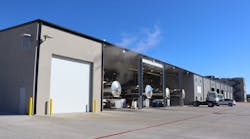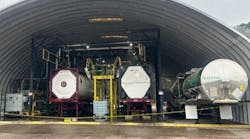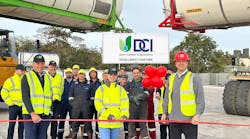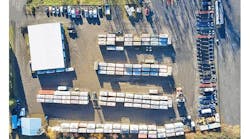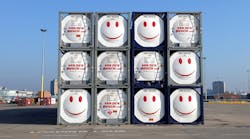Keeping tank cleaning personnel apprised of the dangers of nitrogen is an essential part of confined entry training and procedures, said Bill Miller of M T Clean LLC.
“The dangers associated with nitrogen make it the biggest safety problem in our industry,” he said at the National Tank Truck Carriers Tank Cleaning and Environmental council Seminar March 31-April 1 in San Antonio, Texas.
Miller discussed confined space entry and lockout-tagout procedures.
“Do not allow anyone to enter a tank without completing training,” he warned.
Workers should know their responsibilities whether they will be the one entering the tank, the attendant, or the supervisor. Training should include potential effects of oxygen-deficient atmospheres, the physical reactions at various oxygen percentages, and the time it takes to recover. The use of retrieval equipment and lanyards also is an essential element for the training program. A practice session for confined space rescue should be conducted every six months.
When testing the tank interior air before entry, the monitor should be started in a fresh air setting before testing tank atmosphere, Miller said. “Be careful sensors do not come into contact with water,” he added. After testing the tank's air, personnel should record results. In addition, he recommend that the tank be cooled prior to entry.
Miller also reminded managers to ensure personnel are using the appropriate personal protection equipment and that the harness is attached to a mechanical retrieval device. “When in the tank do not linger,” he added. “And, the person inside the tank must follow the attendant's instructions.”
Having a checkoff list for personnel helps ensure procedures are being followed. “Also look for indications that employees aren't answering the form properly and take action.”
The checkoff list should include a space for determining that the telephone is in operation. “That could be a lifeline in the event of an incident,” Miller said.
In the event of an incident, personnel must have current emergency phone numbers, such as for ambulance services and police and fire departments. “There should be an audible alarm and an air horn, and personnel should call out that there is a man down,” Miller said.
Victims will require care as soon as they are removed from the tank and are likely to be disoriented. They may regain mobility as soon as they inhale fresh air, but they should be restrained to prevent falling from manway on top of the tank trailer. Once they are on the wash rack deck, the victims should be kept there until rescue units arrive.
“The victim of a confined-space incident must be sent to the hospital to be checked out, no exceptions,” Miller cautioned. After an incident, the wash rack procedures and reactions should be reviewed.
Turning to a discussion of safety procedures with equipment, Miller said training is again essential for those who will be operating the equipment. Locks or chains should be used to prevent power sources from being inadvertently turned on. “They have to determine that there is zero energy leading to equipment that will be worked on,” he said.
Specific personnel should be designated to perform lockout/tagout procedures, and no one else should perform the operation. Other workers are to follow the rules.
At the same time, audits and inspections should be conducted to insure procedures are being followed. In addition, if there are subcontractors on site, their workers must understand the tank wash's lockout/tagout program, and the tank wash's personnel must understand the subcontractors' rules. Post a list of equipment and indicate where each control center is located.
